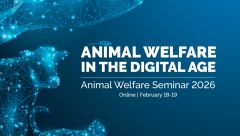The evidence is overwhelming.
The live sheep export trade is cruel and unfixable.
For every one of the thousands of sheep sent abroad, there are just too many potential welfare risks. Even if the exporters are able to partially address one or some of them, the trade remains beyond salvation.
And the live sheep exporters have tried in vain to convince us otherwise, with claims of improvement and overt attempts to undermine facts and science.
However, what simply can’t be fixed are the poor conditions and extremely poor welfare impacts experienced by the sheep, not just onboard (which are bad enough) but throughout the entire live export process.
Like any animal, the welfare of sheep is multifaceted and includes physical and mental aspects and the ability to cope with their environment. The cumulative effect of the numerous stressors sheep destined for the live export trade risk enduring wear down their wellbeing at an alarming rate, and while not every sheep will experience every single stressor or welfare risk, many will – and enough that to continue the trade is not only irresponsible, but unacceptable.
To truly illustrate what this means, we invite you to experience the journey from end to end – scroll below to see the many stressors and welfare risks that these sheep encounter and will continue to encounter until an end date is finally set.

Click here to download the infographic as a PDF (9.0MB).
The journey begins.
Life on a farm is generally a comfortable and predictable one for sheep. For an animal that’s naturally nervous and easily frightened, that’s important for their wellbeing.
But the live export often journey begins by sheep being rounded up by unfamiliar people and loaded into a truck, with guidelines allowing up to 48 hours on road as they’re transported to a feedlot.
There’s no obligation to provide sheep with any food or water during the trip, so they may spend the entire journey hungry and thirsty, uncomfortably packed in with their herd in this new and stressful environment.
First stop at the feedlot.
Sheep have now spent at least five days at the feedlot, mixed in with unfamiliar sheep in a small, penned area. They often have little room to move about or engage in the behaviours that come naturally to them such as grazing and resting together with their herd.
At the feedlot, they’re fed a steady diet of pellet food, different from their normal pasture diet, which may cause digestive upset or hunger if they're unable to adapt to it. The resulting stress of another foreign environment with so many changes and new discomforts continues to build.
Another journey and the trauma of loading.
After the feedlot, sheep are mustered onto another truck to be transported to port. This next journey can take many hours, another long stretch on the road without access to food or water.
Loading onto the export ship will take another several hours. Handlers can use electric prods and dogs to get the sheep to move. They are exposed to the elements and stressed by the noise and the new environment they’re transferred to.
It’s now been over a week since the sheep left the safe surrounds of the farm and have experienced this new world of unpredictable changes. They’re often hungry, thirsty, and frightened.
Life at sea.
Aboard the ship there are often up to 60,000 other sheep, closely confined in pens that often don’t get cleaned until after the ship docks.
They’ll stay packed like this for the entire journey of two to four weeks, or even longer if extreme weather events or other disasters occur. As the ship heads closer to the Equator, the heat and humidity onboard can rise to almost unbearable levels, slowly cooking the buildup of waste sheep are forced to stand in for the entire journey.
One slip or injury could leave them trapped in it alive, unable to reach food or water and at risk of being crushed by their pen mates.
The longer sheep spend onboard they are at risk of heat stress, gastrointestinal illness, and infection. And, even if they manage to avoid these, their mental and physical health can continue to deteriorate with the prolonged lack of movement, and stress of spending 24 hours a day exposed to constant artificial lighting and noise.
Final destination.
Reaching port should be a reprieve, if what was waiting for him on the other side wasn’t also a dreadful situation. Australian animal welfare laws will not protect sheep once they leave the vessel, and they face a high risk of rough handling at their destination.
Stressed, exhausted, and frightened, sheep can be loaded onto yet another truck where they will either be transported to a final feedlot to spend weeks exposed to extreme weather while they are fattened for slaughter, or straight to slaughter where he can often be slaughtered without stunning, causing more fear, pain, and a drawn-out death.
This is why live sheep export needs to end now. We’ve highlighted here just some of the things that can and do regularly happen on board live export ships. Even if some of these can be partially addressed – and even for the luckiest sheep on board – there are just too many cumulative welfare risks.
If live sheep export had any merit, it would not be so strongly opposed by every legitimate animal welfare organisation in Australia and across the globe.
When you think of live sheep export, think of the thousands of sheep who endure this unnecessary and perilous journey. Australia can do better for them, and we must.








